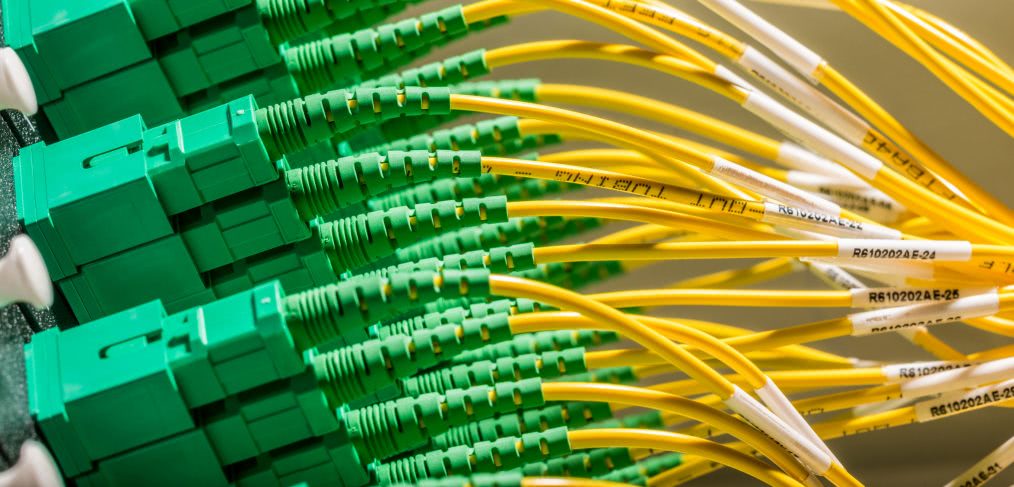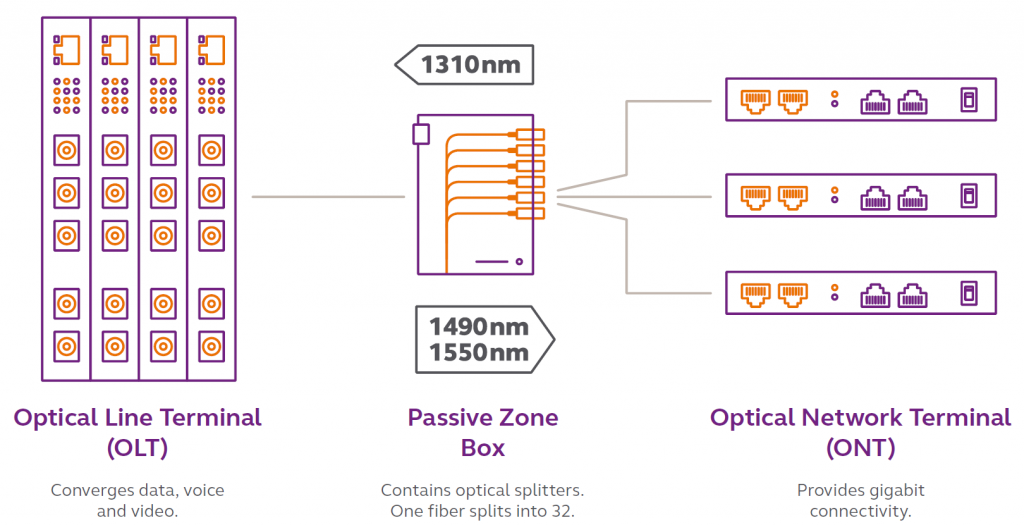
New Thoughts on Connectivity in the Workplace
CRTKL’s Matt Miller talks Google Fiber, Passive Optical LAN and how we can expect workplace connectivity to change.
Take a second to contemplate the following question: How much rentable real estate is your organization using for telecommunications closets?
If I had to guess, the answer is probably something along the lines of, “Way too much!”
For decades we’ve used the same outdated technology to connect our workplace devices to the network: bundles of copper cables running through the ceiling to noisy closets filled with electronics stacked on every floor of the building. And did I mention taking up loads of space?
Now, new ideas for the uses of established fiber optic technology are changing the way architects design technology in the work environment and the way that companies think about real estate, energy use and cost savings.
Passive Optical LAN (POL) uses small, single-mode fiber optic cables to transfer data from the data center to the end user, all without an electronic middleman. The use of this technology eliminates the requirement for telecommunication closets and their associated expenses. Removing these closets gives architects the freedom to reclaim space, reduce power requirements and eliminate the need for cooling in the mid-point.
When discussing this new tech, companies always want to know how this will affect their workers’ day-to-day lives. The simple answer is: not at all. But it’s more nuanced than that. POL doesn’t change how the average user goes about their workday. In fact, users don’t actually have to learn anything new and may not even notice an immediate difference, since their user experience won’t change.
The real change comes in the form of cost and real estate savings, security and ease of maintenance. POL allows massive campuses to feed off one central communications point. Even in that large environment, IT staff can find devices and users incredibly quickly in order to fix any issues. Because the OLT manages all connections, maintenance can be done from a single pane of management glass rather than distributed throughout closets in building—no network switches to run to, cables to trace out or AC units to maintain.
The technology works by placing an Optical Line Terminal (OLT) in the core of the building or campus. Single strands of fiber reach to passive optical splitters dispersed throughout the environment which replicate the signal from one strand to 32 strands of fiber. Splitters tuck neatly into a small enclosure which can be attached to a ceiling, wall or under floor producing no noise or heat—much smaller and nicer than those unseemly closets. Each of the fibers from those splitters connects to an Optical Network Terminal (ONT) at the end user device location where they provide common Ethernet, phone and video connections.

With fiber optics, the 100 meter cable limitation technology of yore that designers historically wrestled into drawings is no longer necessary. The POL’s 20 kilometer reach means that a single OLT can serve an entire building or campus with no powered devices—and therefore no closets—between the data center and end user device.
Okay, so no bulky wires and no closets. But how often will companies have to update their tech as the times change? Perhaps the most intriguing thing about POL is that is already ready for the future. Its ability to grow or contract means that, in five or ten years, if a company needs faster internet, tiny, undisruptive changes can be made to the same fiber, quickly bringing the internet up-to-speed.
“Companies can save some 42% by installing POL instead of active Ethernet. CallisonRTKL worked with one Global Fortune 225 company to install POL in their Americas headquarters. With the help of CallisonRTKL, the company saved $1 million in CAPEX savings, an estimated $240,000 per year in energy savings and an estimated $370,000 per year in Cisco Smartnet savings.”
Incredibly, this technology also costs less to implement and maintain. The massive deployment of single-mode fiber by telecommunications carriers connecting business and homes has reduced the cost to a fraction of the cost of the typical twisted-pair copper network cable. Companies can save some 42% by installing POL instead of active Ethernet. CallisonRTKL worked with one Global Fortune 225 company to install POL in their Americas headquarters. With the help of CallisonRTKL, the company saved $1 million in CAPEX savings, an estimated $240,000 per year in energy savings and an estimated $370,000 per year in Cisco Smartnet savings. The reduction in cabling costs combined with the elimination of closet construction, HVAC and associated power makes the capital expenditure savings too compelling to ignore.
The telecommunications carriers have been using passive optical network technology for years. We see it in the form of reliable services such as Google Fiber, Verizon FiOS and AT&T U-verse. That same technology serving tens of millions of residents and businesses today is now in the hands of Fortune 500 companies, major universities, hotels and government agencies to provide the same high-speed service. It’s an exciting time to explore POL and to watch as it’s uses and applications only continue to grow.
